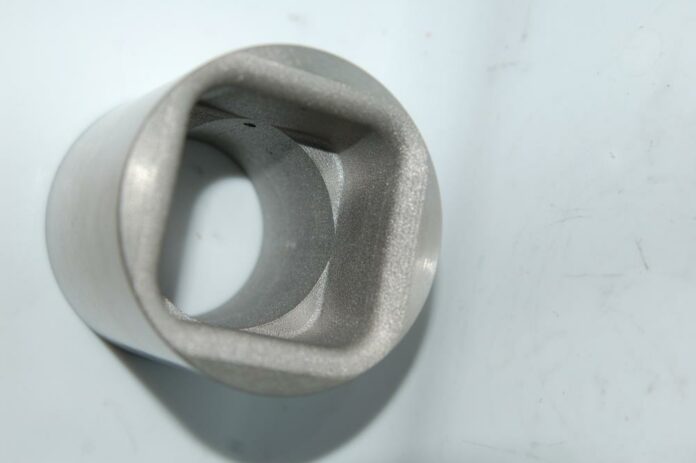It started with a piece here, a small part there.
Arnold Air Force Base is a United States Air Force base located in Coffee and Franklin counties. Ever since their engineering team has embedded AM as part of their operations – they purchased their first 3D printer seven years ago -, they have been able to produce a wide range of parts in-house, from plastic rigs to elements vital to tunnel operations.
After a review of their first 3D printer’s capabilities in 2019, the team decided to purchase two additional 3D printers: this time a resin-based 3D printer and a dual filament-based printer.
“There have been a few prototypes applied to the tunnel,” Tunnel 9 system and nitrogen supply engineer Samuel Gigioli said. “In fact, a very critical aero-optic part was prototyped with our resin printer, but most prints are rigs, test fit gauges or other miscellaneous parts.”
In February 2020, a research and development project involving the additive manufacture of refractive metal hardware launched at Tunnel 9. Gigioli soon took charge of this effort, one that aimed to reduce lead time and manufacturing costs for some high-temperature parts used in Tunnel 9.
“These Tunnel 9 parts endure very cyclic, high-pressure and -temperature conditions, so the lifespan on these parts is significantly shorter than other parts in the tunnel,” Gigioli said. “These parts can experience up to 3,000 degrees Fahrenheit. This is why refractive metals are chosen, as they are metals that can withstand extreme heat with relatively little deformation.”
The ongoing AM research and development effort is led by Gigioli, who is responsible for the upkeep of AM materials, devices and printers, and Tunnel 9 Chief Facility Engineer Nicholas Fredrick. They work with a pair of contractor teams, one of which prints the parts and handles the entire manufacturing process from start to finish, and another which supplies the printing powder and analyzes material characteristics.
Perhaps the most significant accomplishment of the research and development program thus far has been the successful manufacture of a component known as the petal orifice liner. This device, integral to high Mach number tunnel runs, is situated between the two burst diaphragms that Tunnel 9 uses to act as a high-speed valve.
In the case of a refractive metal part, AM is completed through a laser-powder bed fusion process. As a reminder, with this method, the metal begins as a highly-refined and -controlled metal powder. A high-powered laser is applied to this powder, and it essentially melts the metal particles layer-by-layer until the piece is formed according to specifications.
The AM liner, Gigioli said, has outperformed its wrought-built counterpart that has been used for decades in the facility.
“The part is cheaper to manufacture, quicker to manufacture and deliver, and is more resilient to the cyclic temperature loading,” Gigioli said. “The AM process creates very unique microstructures within the material and, as a result, the part’s structural and thermal properties are different than traditional wrought billets metal.”
Those involved in AM at Tunnel 9 have already begun work on the next 3D-printed part to be applied in high Mach number conditions. This component, a particle separator, would act to weed out any airborne particles in the gas flow without hindering any mass flow in the tunnel.
“We are still awaiting the component to be fully finished, but we hope to implement the component in a test program starting around September,” he said.
The success of the 3D printing program at Tunnel 9 has sparked conversations among team members about potential future AM projects.
“Myself and the people involved in this R&D project are excited for what the future holds for AM,” Gigioli said.
Their efforts to this point haven’t gone unnoticed. Part of the team’s research effort involves showcasing the potential of AM for the entire Department of Defense. Gigioli said personnel from various DOD components have already chimed in to compliment the Tunnel 9 team’s success and express their astonishment with the AM technology or extol its potential.
“Imagine if we scale this process up to multiple tunnel parts or even entire systems,” Gigioli. concludes “Now some DOD components are interested in printing test models or leading edge models. I hope to continue leading Tunnel 9 down this path and increase our success through this technology.”
Remember, you can post jobopportunities in the AM Industry on 3D ADEPT Media free of charge or look for a job via our job board. Make sure to follow us on our social networks and subscribe to our weekly newsletter : Facebook, Twitter, LinkedIn & Instagram ! If you want to be featured in the next issue of our digital magazine or if you hear a story that needs to be heard, make sure to send it to contact@3dadept.com






